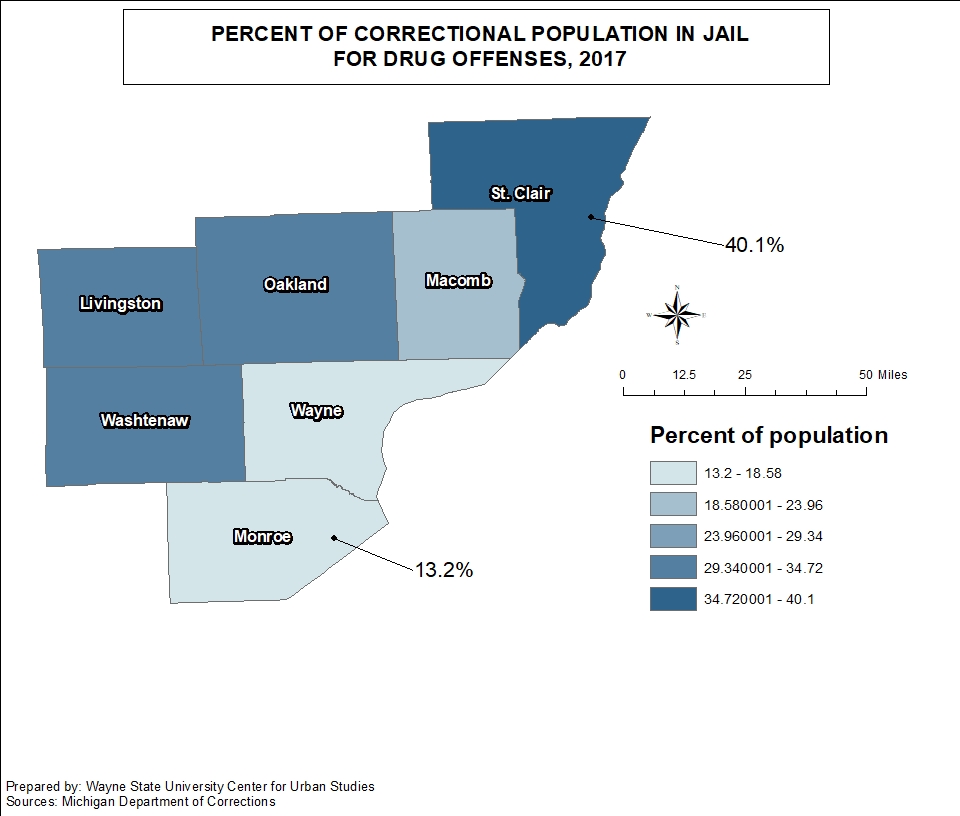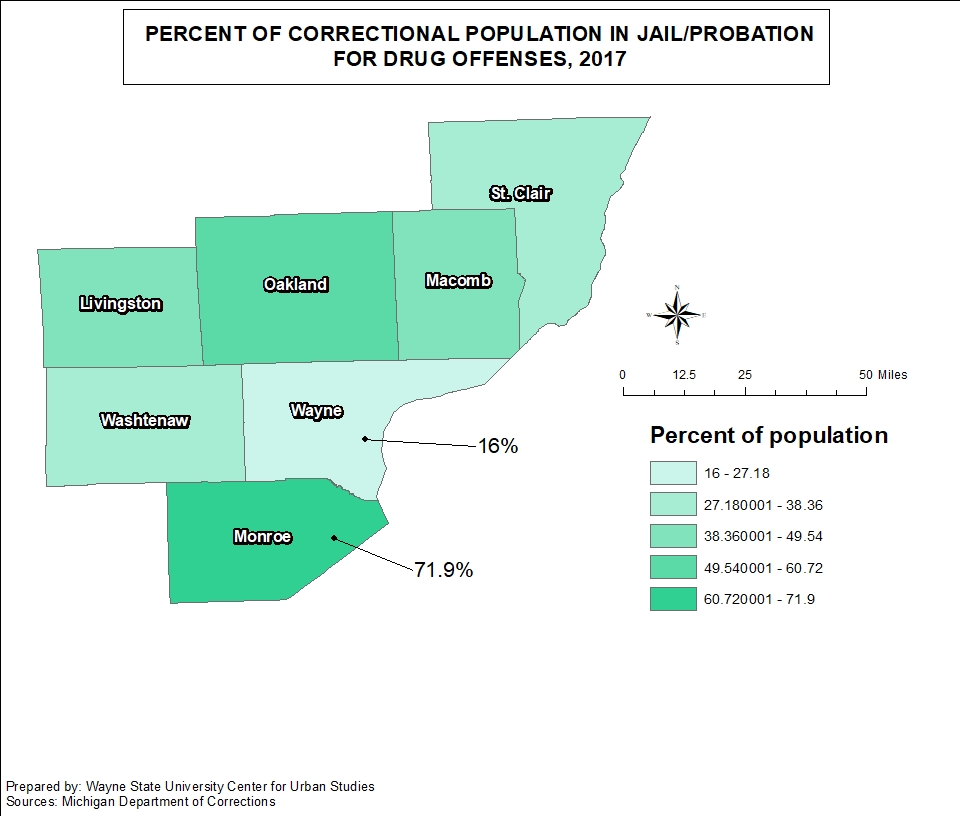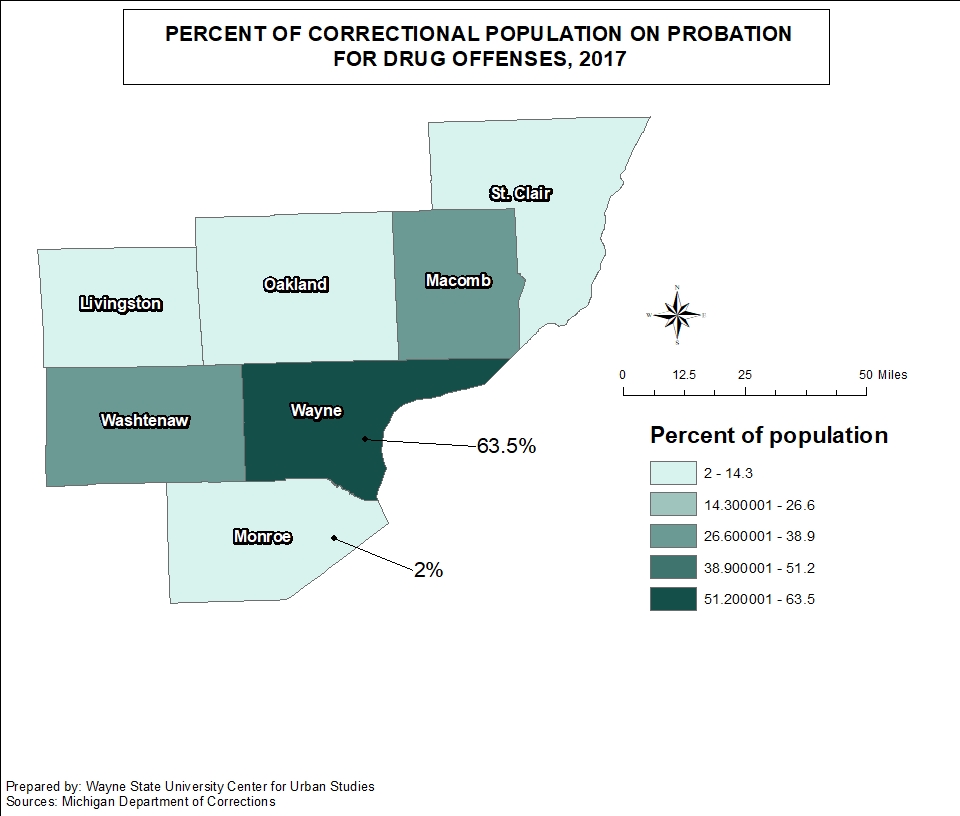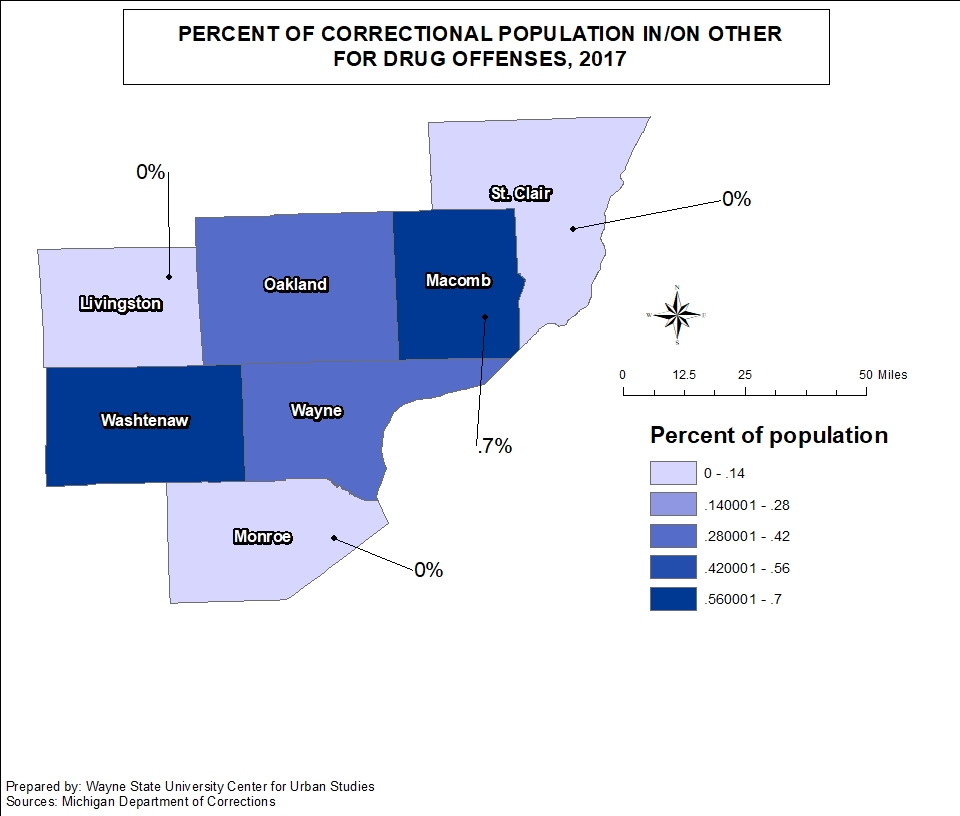The Michigan Department of Corrections releases a report annually that details, among other information, the percentage in which felony offenders are sentenced to prison, jail, jail and probation, probation and other (community service, restitution fines and costs) for all offenses, drug offenses and assaultive offenses. The post highlights those breakdowns by county in the seven county region.
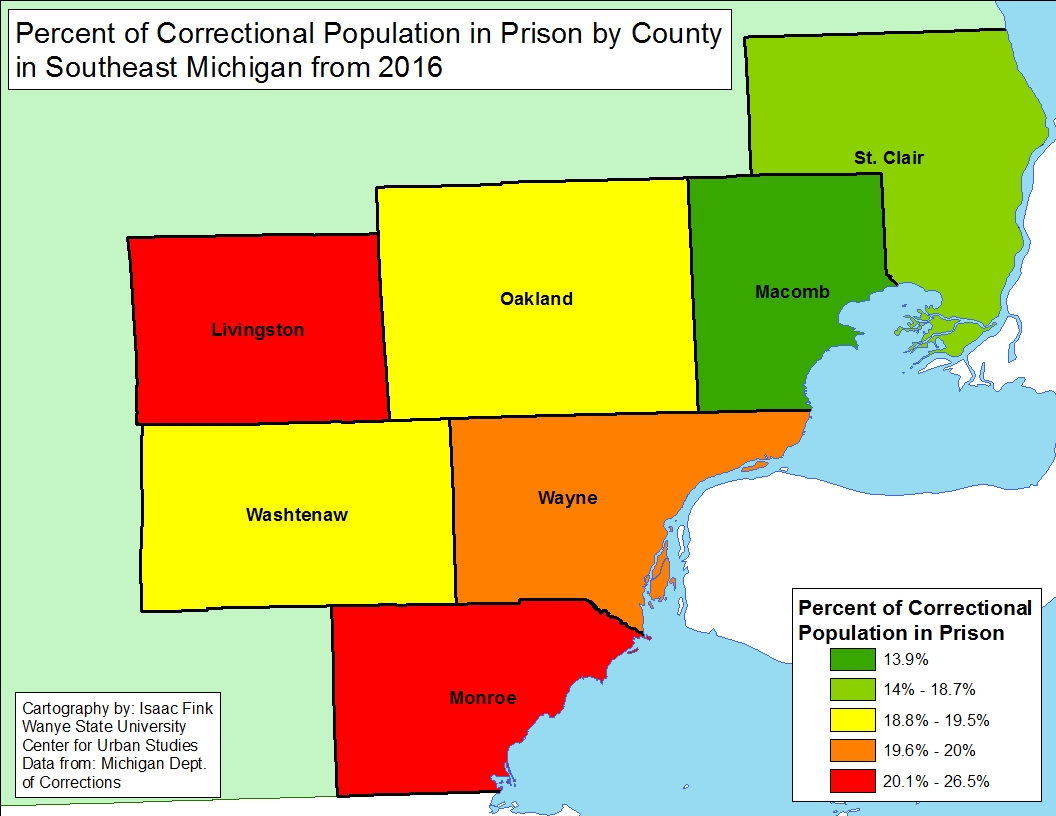
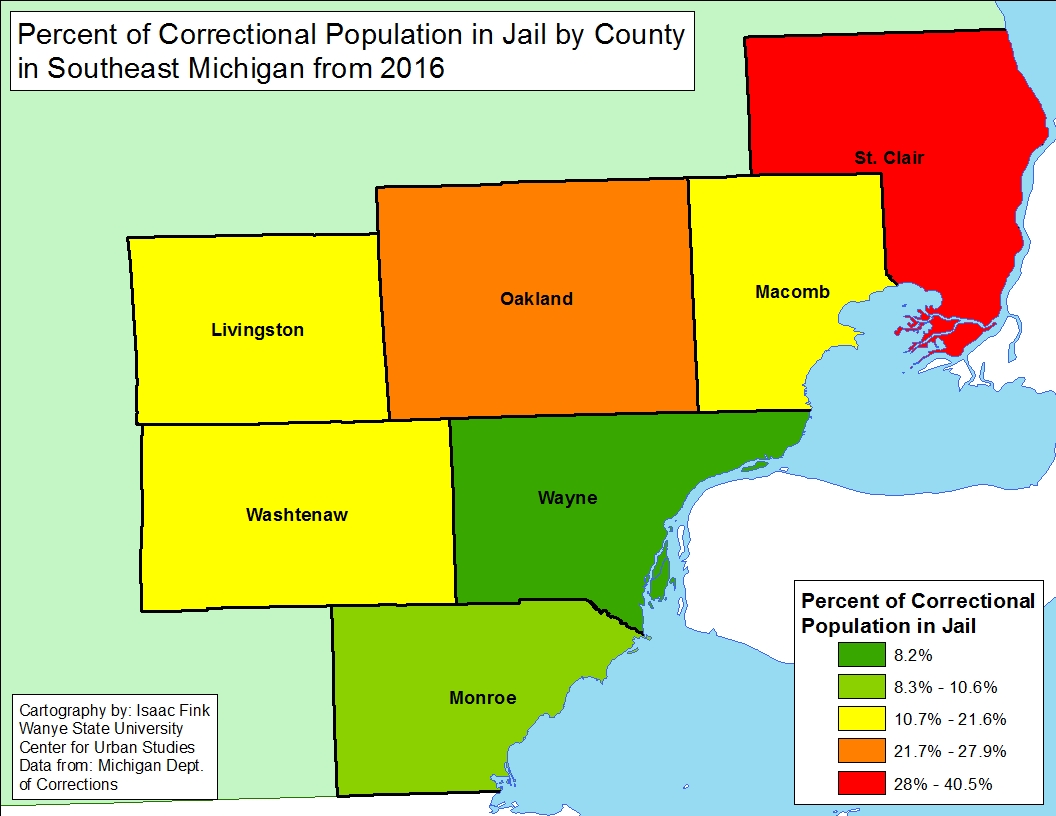
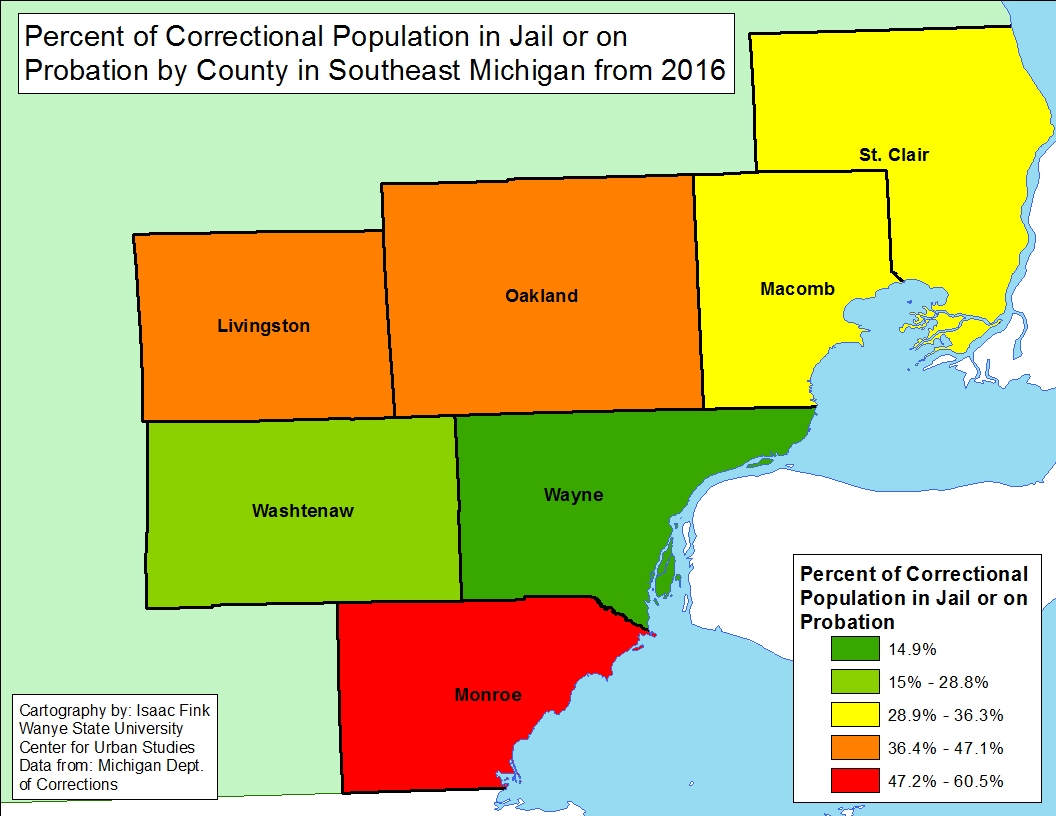
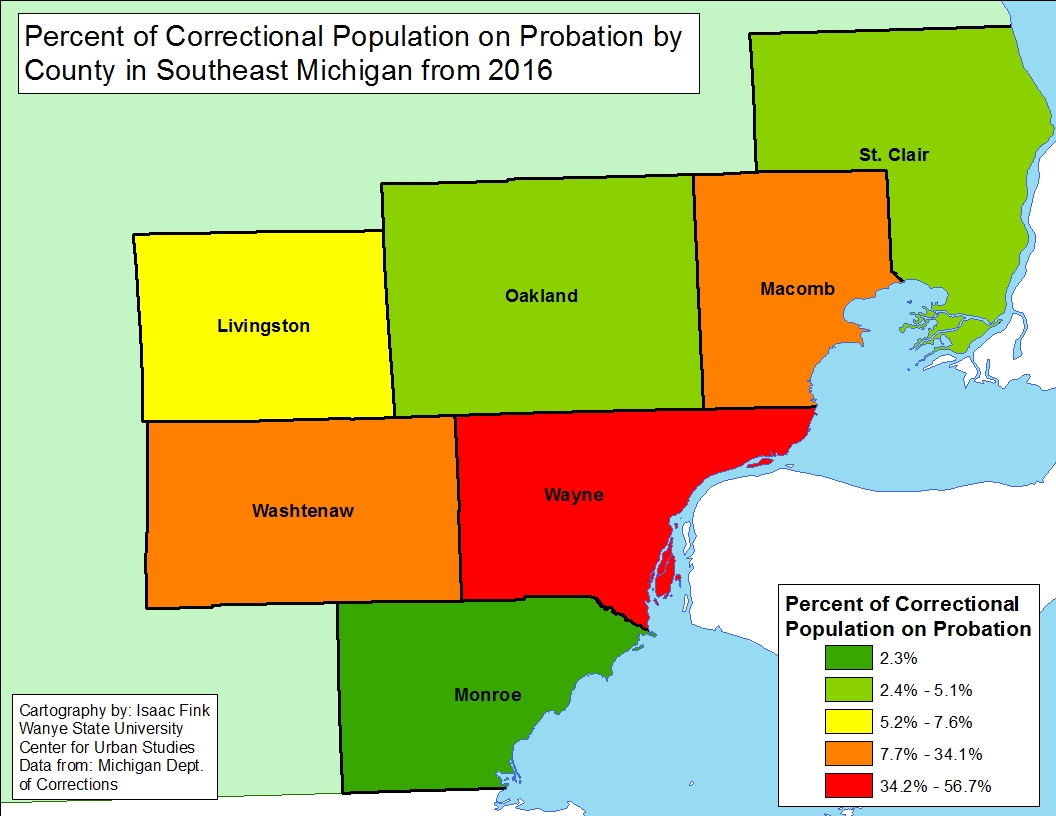
When examining the overall breakdown between the five categories above, Monroe County had highest percentage of felony offenders sentenced to prison over any other sentence type. In 2016, 26.5 percent of the felony offenders in Monroe County were sentenced to prison. Livingston County was the only other county in the region where more than 20 percent of felony offenders were sentenced to prison; this number was 24.5 percent. Macomb County had the lowest percentage of felony offenders sentenced to prison at about 14 percent. The largest difference between prison and jail is the length of stay for an offender; traditionally if an offender is sentenced to serve time for longer than a year they are sentenced to prison.
In the jail category for all criminal felony offenders, St. Clair County had the highest percentage of offenders sentenced to only jail at 40.5 percent. Oakland County had the second highest percentage of felony offenders sentenced to only jail time at about 28 percent. Wayne County had the lowest percentage at 8.2 percent. Wayne County also had the lowest percentage of felony offenders sentenced to jail and probation at 14.9 percent. For the jail/probation sentencing category, Monroe County had the highest percentage of felony offenders sentenced to that category at 60.5 percent. Overall, the jail/probation category had the highest percentage of sentencing for all felony criminal offenses in the region, with the exception of Wayne County. According to the data, in Wayne County in 2016 56.7 percent of criminal felony offenders were sentenced to probation; the county with the second highest probation sentencing rate was Washtenaw County 34. 1 percent. Livingston County had the lowest probation rate at 7.6 percent.
The maps below portray for those sentenced for drug offenses the percent of the correctional population in different settings.
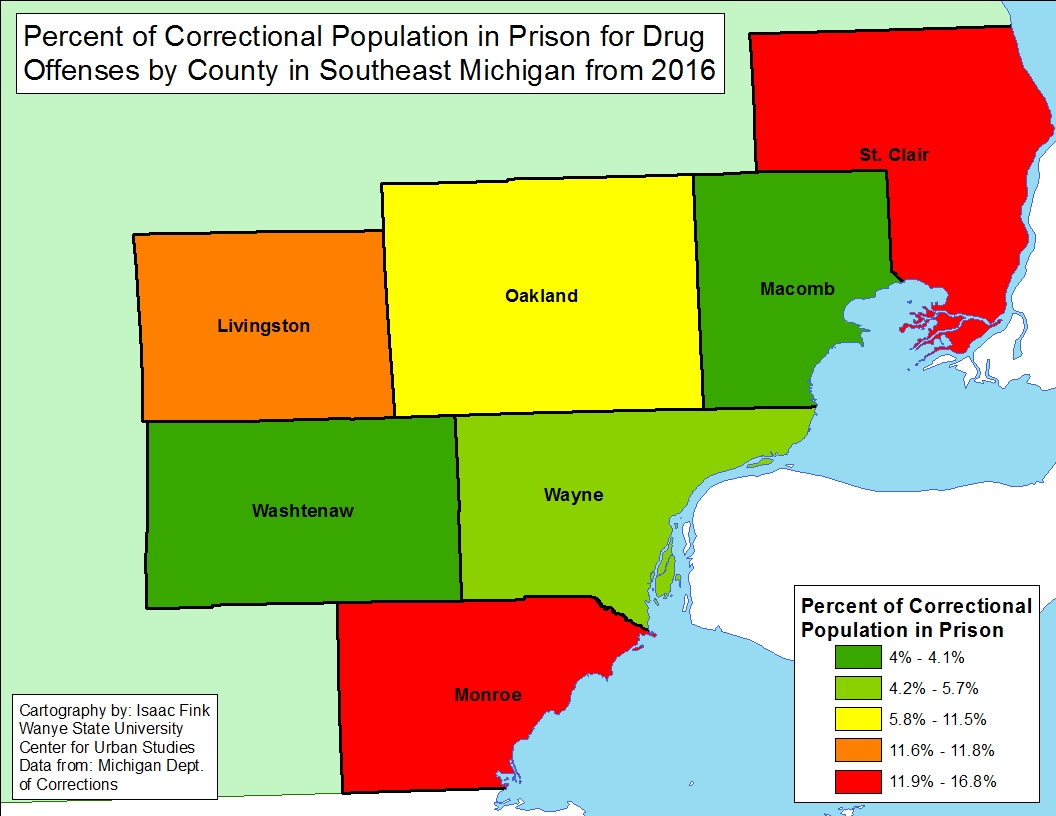
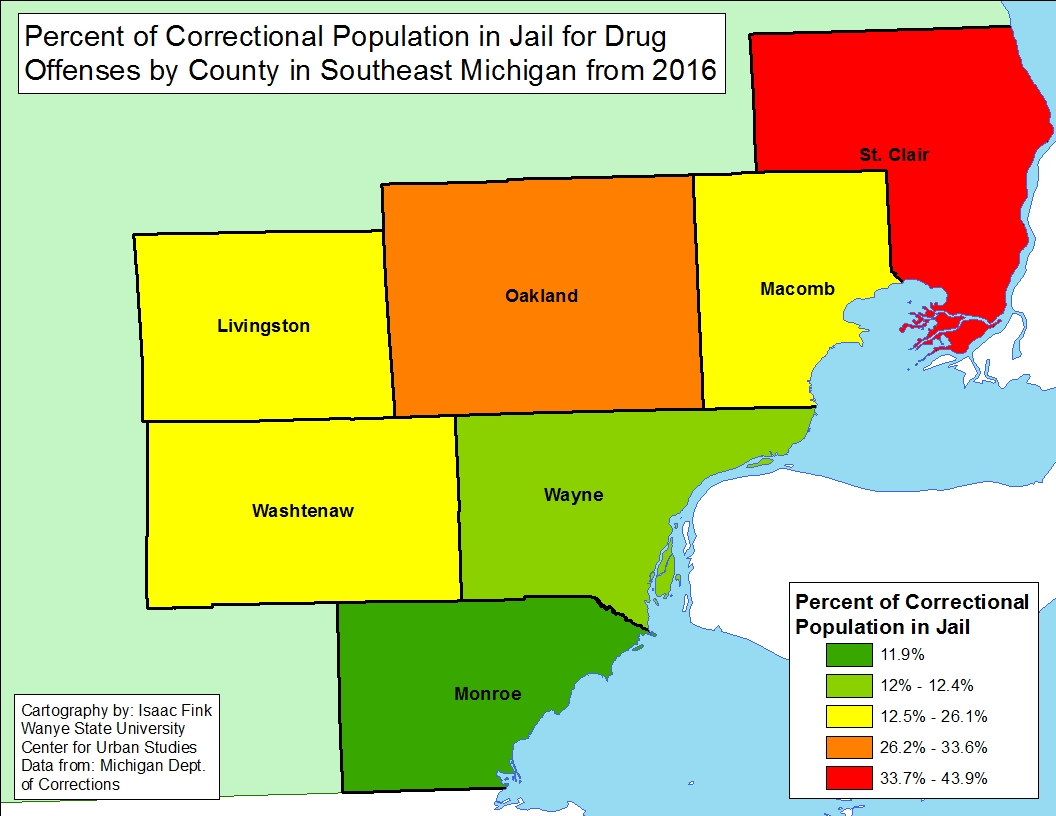
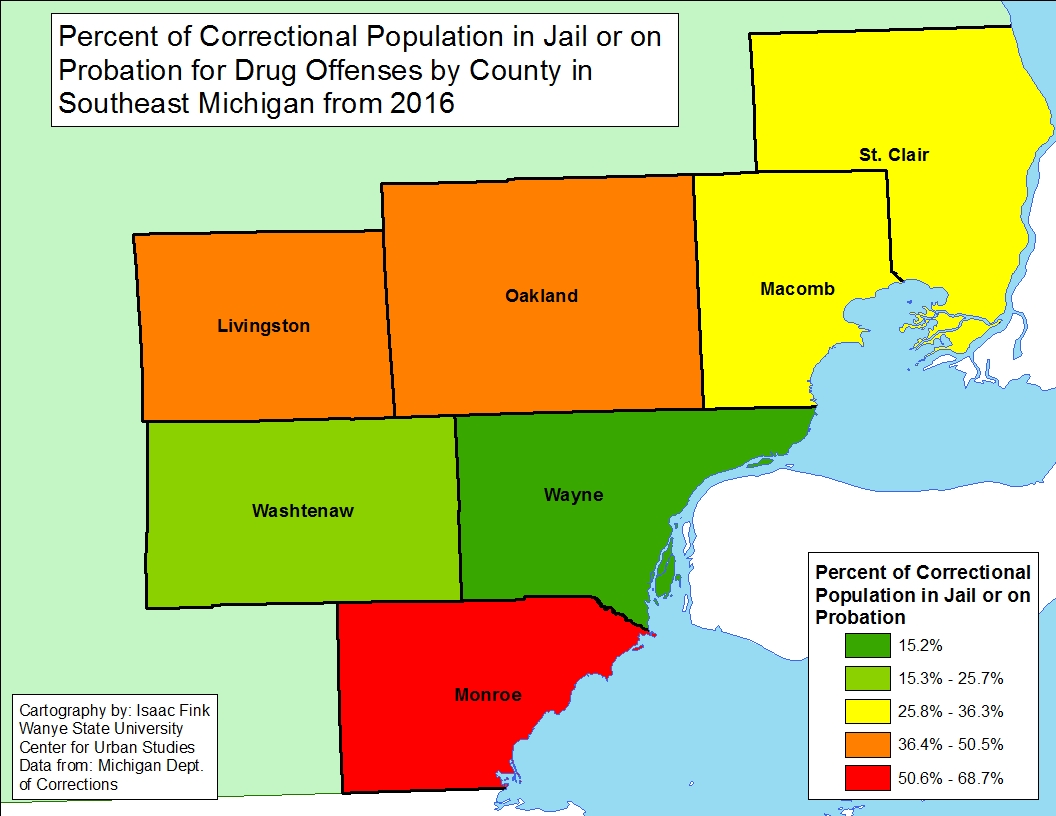
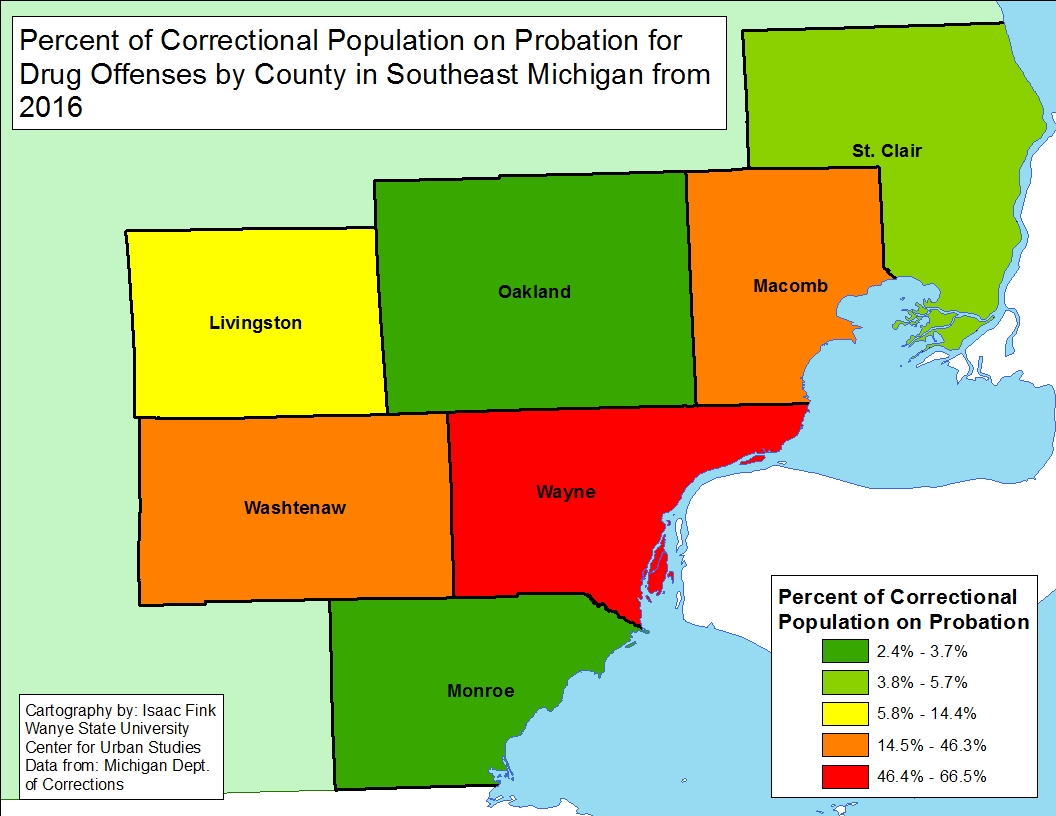
When examining only felony drug offenders, St. Clair County had highest percentage of individuals who were sentenced to prison at 16.8 percent. Monroe County had 16.7 percent of its felony drug offenders sentenced to prison. Washtenaw County had the lowest percentage of felony drug offenders sentenced to prison at 4 percent.
For the jail, jail/probation and probation sentencing categories St. Clair County also had the highest percentage of felony drug offenders sentenced to jail at about 44 percent. The county that had the second highest percentage of felony drug offenders sentenced to jail was Oakland County at 33.6 percent. Monroe County had the lowest percentage of felony drug offenders to jail at 11.9 percent and the highest percentage of offenders sentenced to jail and probation at 68.7 percent. Wayne County had the lowest percentage of felony drug offenders sentenced to jail and probation at 15.2 percent but had the highest percentage of offenders sentenced to only probation at 66.5 percent. That sentencing category had the greatest difference between the highest percentage of offenders sentenced to probation and the lowest percentage sentenced. While Wayne County had 66.5 percent of offenders sentenced to probation, only 2.4 percent of felony drug offenders were sentenced to probation in 2016 in Monroe County.
When examining the percentage of felony criminal offenders sentenced for assaultive offenses in 2016, the range in the percentage of individuals sentenced to prison was the narrowest amongst all seven counties. Monroe County had the highest percentage of felony criminal offenders sentenced for assaultive offenses at 41 percent while Oakland County had the lowest percentage at 31.6 percent. The range for those sentenced to jail was a bit wider, with St. Clair County having the highest percentage of felony assault offenders sentenced to jail 35.5 percent. Wayne County had the lowest percentage of felony assault offenders sentenced to jail at 5.2 percent. For the jail/probation sentencing category Monroe County had the highest percentage of offenders sentenced at 48.5 percent and Wayne County had the lowest percentage sentenced at 14.1 percent. While Wayne County had the lowest percentage of felony assault offenders sentenced to jail and jail/probation it had the highest percentage of offenders sentenced to just probation at 41.9 percent. See maps below.
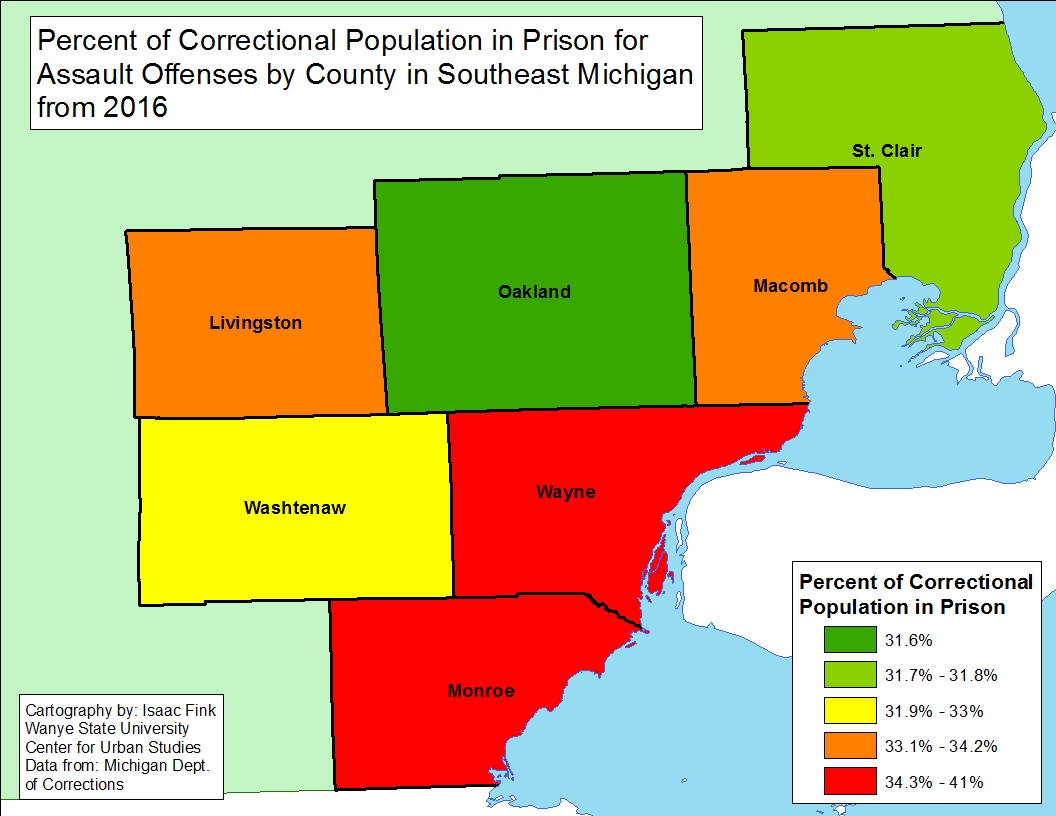
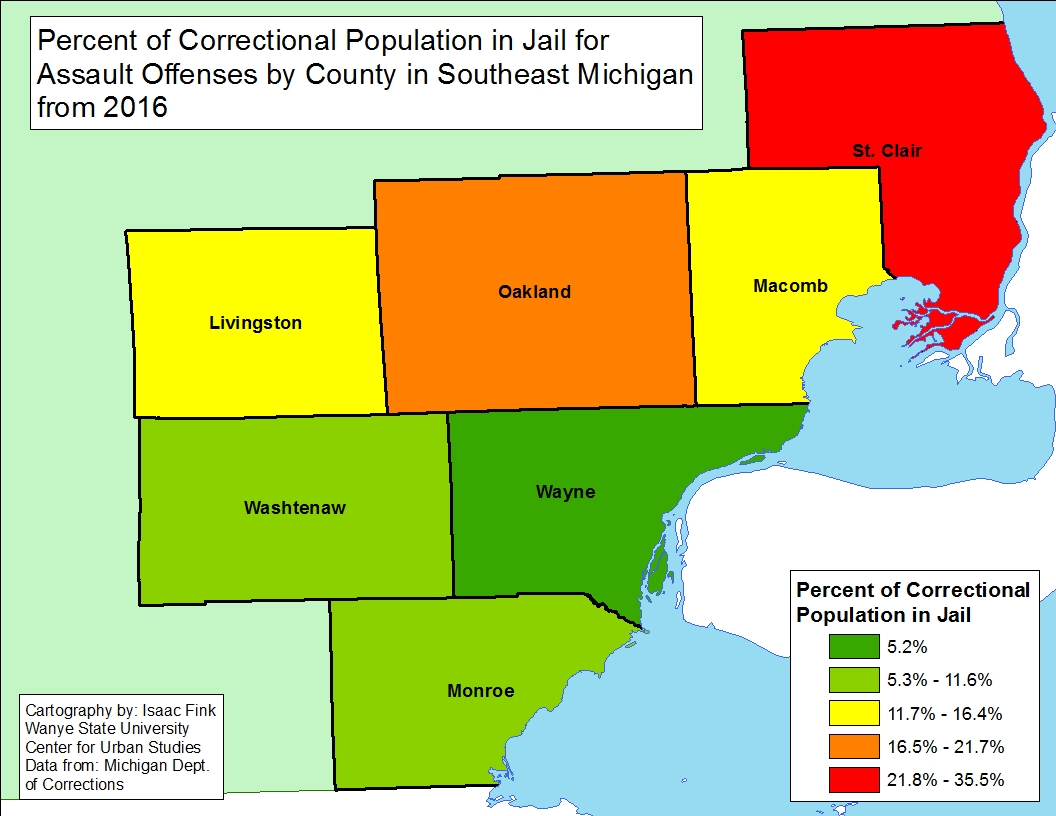
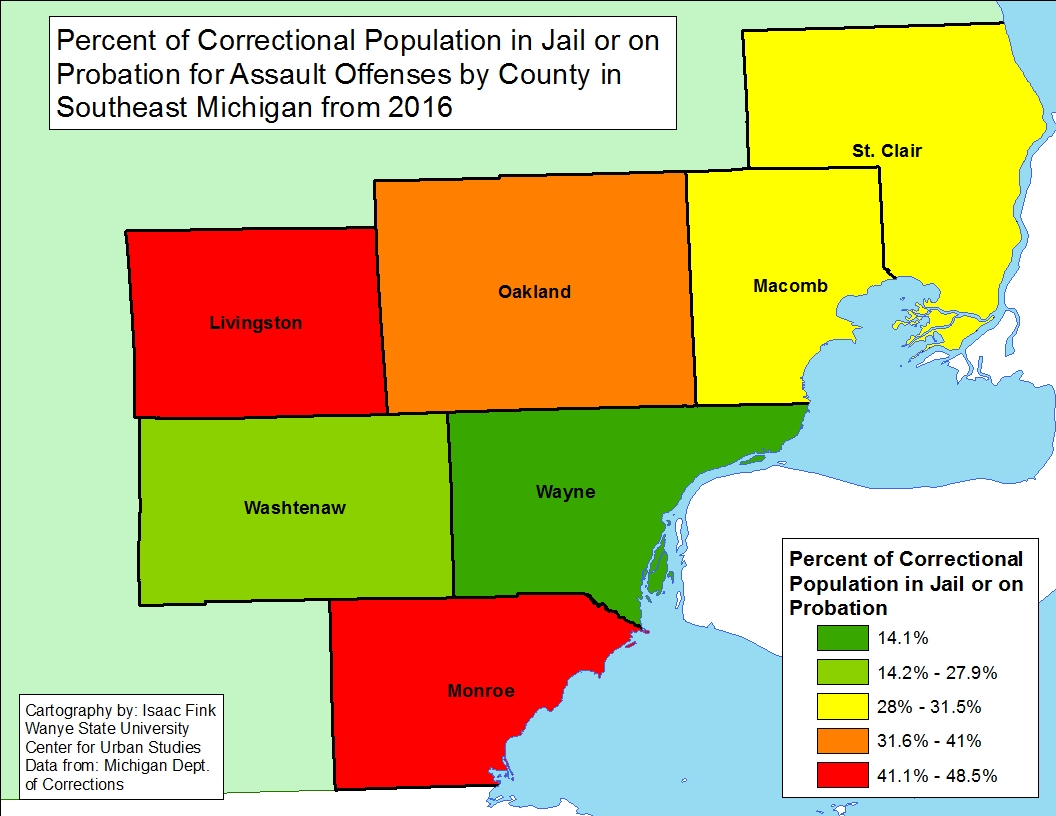
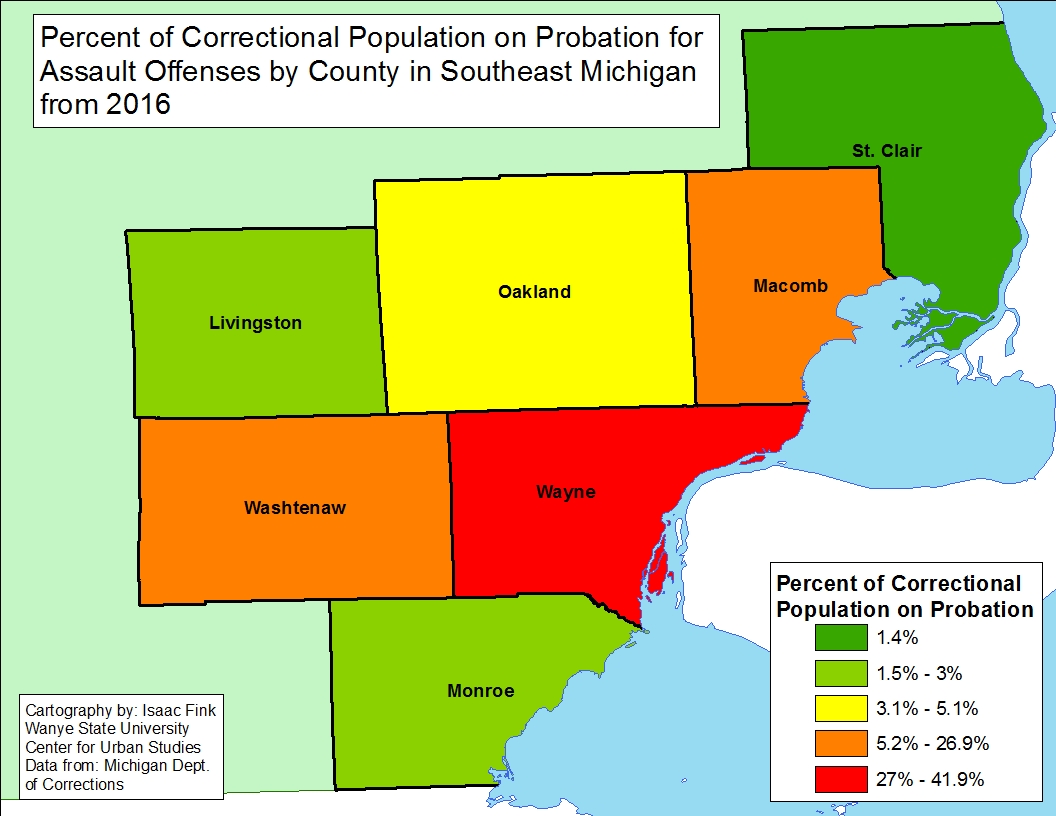
One of the main takeaways from this post is that Wayne County regularly has the highest percentage of offenders sentenced to only probation and the lowest percentage sentenced to any length of a jail stay. The reason for this could be because probation is traditionally less expensive for a government entity than sentencing someone to jail. Capacity issues at county jails could also play a role in this decision. Next week, we will examine how the numbers of offenders in each county in Southeastern Michigan has changed over the years, a set of data that could further support the observations above.

